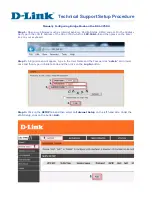
Configuring Voice
Silence Suppression and Comfort Noise Generation
Cisco SRP500 Series Services Ready Platforms Administration Guide (SRP520 Models)
101
6
STEP 8
Contact technical support:
•
If you are an end user of VoIP products, contact the reseller or Internet
telephony service provider (ITSP) that supplied the equipment.
•
If you are an authorized Cisco partner, contact Cisco technical support at:
www.cisco.com/support
.
Silence Suppression and Comfort Noise Generation
Voice Activity Detection (VAD) with Silence Suppression is a means of increasing
the number of calls supported by the network by reducing the required bandwidth
for a single call. VAD uses a sophisticated algorithm to distinguish between
speech and non-speech signals. Based on current and past statistics, the VAD
algorithm decides whether or not speech is present. If the VAD algorithm decides
speech is not present, the silence suppression and comfort noise generation is
activated. This is accomplished by suppressing the transmission of the natural
silence that occurs in normal two-way connection. The IP bandwidth is therefore
used only when someone is speaking. During the silent periods of a telephone call,
additional bandwidth is available for other voice calls or data traffic because the
silence packets are not being transmitted across the network.
Comfort Noise Generation provides artificially-generated background white noise
(sounds), designed to reassure callers that their calls are still connected during
silent periods. If Comfort Noise Generation is not used, the caller may think the call
has been disconnected because of the “dead silence” periods created by the VAD
and Silence Suppression feature.
Silence suppression is configured from the Line (1-2) pages. tabs. See
Line Pages
(1–2), page 156
.
















































